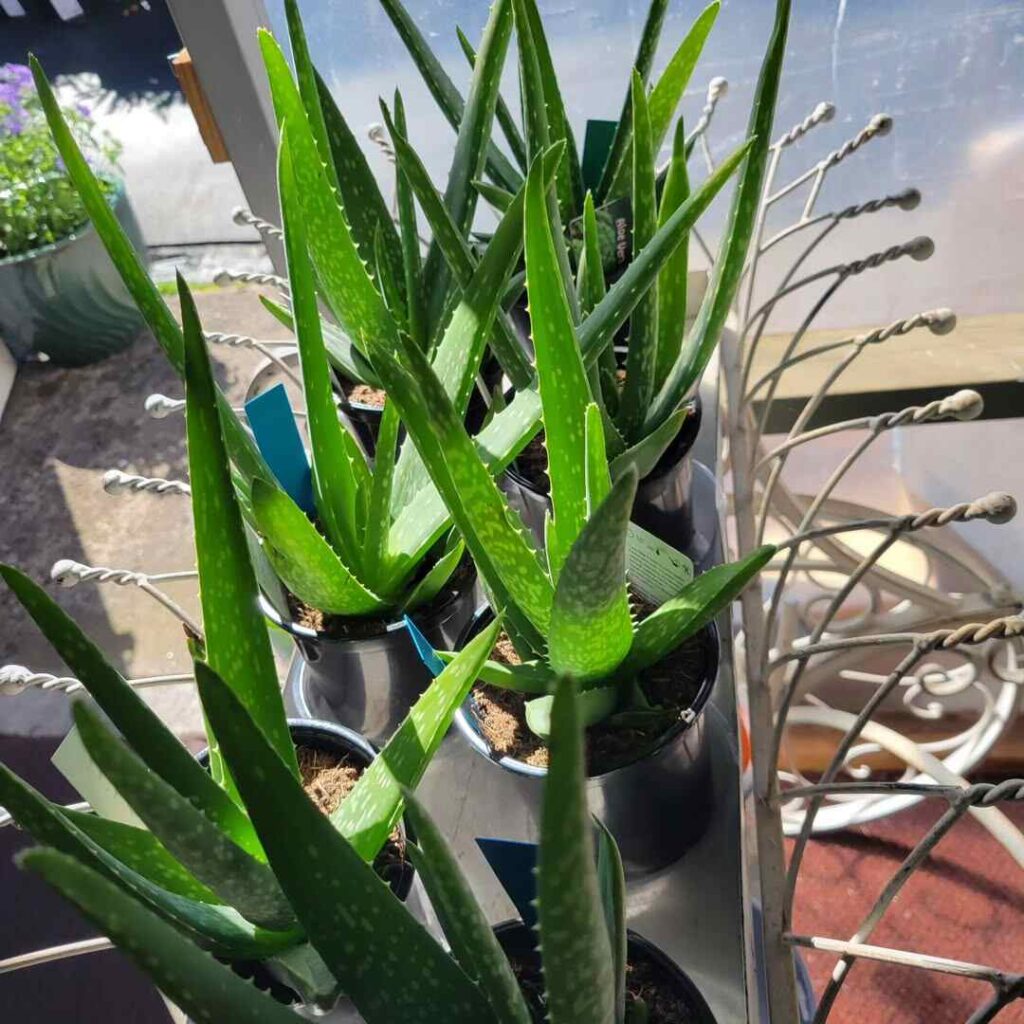Aloe vera is a popular succulent known for its healing properties and low-maintenance care. One of the most important factors in growing a healthy aloe vera plant is understanding its sunlight needs. In this article, we will explore whether your aloe vera needs direct sunlight, how to identify signs of improper lighting, and tips for choosing the best spot in your home.
Proper sunlight exposure is crucial for aloe vera to thrive. While aloe vera is a hardy plant that can tolerate some neglect, it requires adequate light for optimal growth. Understanding the balance between too much and too little sunlight is key to keeping your plant healthy and vibrant.

Understanding the Sunlight Requirements of Aloe Vera
Aloe vera is native to sunny, dry regions, which means it thrives in bright, indirect light. However, while it enjoys sunlight, it is important to note that direct sunlight, especially during the hottest part of the day, can cause damage. Aloe vera plants prefer around 6 hours of indirect sunlight, but if exposed to too much direct sunlight, they may suffer from sunburn.
- Ideal Light Exposure: Bright, indirect sunlight.
- Avoid: Intense direct sunlight, especially during midday.
- Best Location: Near a window with sheer curtains or filtered light.
If your aloe vera is placed in a spot with too little light, it may become leggy, with long, weak stems that can result in poor health. On the other hand, too much direct sunlight can cause the plant’s leaves to become scorched, leading to brown spots or fading color.
How to Identify If Aloe Vera Is Getting Too Much or Too Little Light
Understanding how your aloe vera responds to different light levels is crucial in ensuring its health. Whether it’s too much or too little light, aloe vera can show clear signs of distress that are easy to spot.
Too Much Light
- Sunburned Leaves: Brown or yellow patches on the leaves, often with a dry, crispy texture.
- Faded Color: Aloe vera’s vibrant green leaves may lose their luster and turn pale.
Too Little Light
- Leggy Growth: Long, thin stems with sparse leaves, a clear indication of insufficient sunlight.
- Slow Growth: Aloe vera may show little to no new growth, and the plant may appear weak or unhealthy.
By observing your plant’s condition, you can adjust its placement to ensure it gets the right amount of sunlight.
Selecting the Perfect Spot for Your Aloe Vera
When choosing the best location for your aloe vera, it’s essential to keep in mind its specific light requirements. While the plant can adapt to various lighting conditions, finding the right spot in your home can make a significant difference in its overall health and growth.
Consider the Following When Choosing a Spot:
- Indirect Light: A bright room with plenty of natural light is ideal. Avoid placing it in direct sunlight, which could cause sunburn.
- South or West-Facing Windows: These windows tend to offer the most sunlight, but make sure it’s filtered through curtains to avoid excessive heat.
- Avoid Dark Corners: Aloe vera needs at least 6 hours of indirect sunlight daily. Dark spots or areas with little light can cause the plant to become weak and leggy.
If your home lacks a spot with adequate natural light, consider using grow lights to provide the necessary light intensity for your aloe vera. Ensure that the light is not too harsh, and that the plant receives around 12-14 hours of light per day for optimal growth.
Potting and Soil Considerations for Aloe Vera
Aloe vera’s growth is highly dependent on the soil and potting conditions. The right combination of potting mix and container can help ensure the plant thrives, even if sunlight exposure isn’t perfect.
Key Factors for Potting Aloe Vera:
- Well-Draining Soil: Aloe vera needs soil that drains well to prevent root rot. A cactus or succulent potting mix is ideal.
- Avoid Overwatering: Overwatering can lead to root rot, so allow the soil to dry out completely between waterings.
- Proper Pot Size: Use a pot that’s not too large, as this can retain excess moisture. Ensure there are drainage holes at the bottom of the pot.
Soil Mix Tips:
- Ideal Mix: A combination of 2 parts potting soil, 1 part sand, and 1 part perlite for better drainage.
- Alternative: You can also use a pre-mixed cactus soil blend available at most gardening centers.
By choosing the right soil and pot, you can create an environment that helps your aloe vera thrive even in less-than-ideal lighting conditions.
Watering Aloe Vera Properly
Watering aloe vera correctly is a key factor in its overall health. Since this succulent thrives in dry conditions, improper watering can lead to various issues, such as root rot or dehydration. Understanding how to water aloe vera properly, especially in relation to its sunlight exposure, can make a significant difference in its growth.
Tips for Watering Aloe Vera:
- Water Deeply, but Infrequently: Aloe vera prefers deep watering, allowing the water to soak through the roots. However, it’s important to wait until the soil is completely dry before watering again.
- Avoid Overwatering: Aloe vera is highly susceptible to root rot. Make sure the soil is dry to the touch before adding more water. During the winter months, reduce watering frequency.
- Water at the Base: When watering, direct the water toward the base of the plant and avoid wetting the leaves, as this can lead to fungal issues.
Watering Schedule:
- Summer: Water once every 1-2 weeks, depending on the heat and humidity levels.
- Winter: Water less frequently, as aloe vera enters a dormant phase and needs less water.
Proper watering, combined with the right sunlight exposure, will help your aloe vera stay healthy and continue to grow.
Dealing with Pests and Fungal Issues in Aloe Vera
Aloe vera plants are generally resistant to pests and diseases, but improper care or unfavorable conditions can make them susceptible to a few common problems. It’s important to address pests or fungal issues promptly to prevent them from affecting your plant’s health.
Common Pests and Fungal Issues:
- Mealybugs: These white, cotton-like insects tend to hide in the crevices of the plant. They can be controlled by wiping the leaves with a cotton swab dipped in rubbing alcohol.
- Aphids: Small, green insects that may appear on the leaves. They can be removed with a blast of water or insecticidal soap.
- Fungal Infections: Overwatering or high humidity can lead to fungal growth. Look for discolored, mushy spots on the leaves. If this occurs, remove the affected parts and ensure proper watering practices.
Preventive Measures:
- Proper Air Circulation: Ensure that your aloe vera is not crowded by other plants. Good airflow helps prevent fungal infections.
- Right Watering Practices: Avoid getting the leaves wet, and always water at the base of the plant.
By keeping pests and fungal issues under control, you ensure that your aloe vera continues to grow strong and healthy.
Designing an Aloe Vera-Friendly Space
Creating an ideal environment for your aloe vera goes beyond proper sunlight exposure and watering. The design of your space can also play a vital role in promoting the plant’s growth and overall health. A well-designed space will help maintain the right temperature, humidity, and airflow, all of which are crucial for aloe vera’s well-being.
Design Tips for an Aloe Vera-Friendly Space:
- Bright, Sunlit Area: As mentioned earlier, aloe vera needs bright, indirect light. Ensure that the space is near a window or where it can receive filtered sunlight.
- Temperature Control: Aloe vera thrives in warm conditions, ideally between 59°F (15°C) and 77°F (25°C). Keep the plant in a spot that doesn’t experience drastic temperature fluctuations.
- Avoid High Humidity: Aloe vera does not tolerate high humidity well. Ensure your space is not overly damp to prevent fungal growth and rot.
Additional Design Considerations:
- Decorative Containers: Aloe vera can be a great addition to home décor. Use stylish pots that complement your space while offering proper drainage.
- Minimalism: Aloe vera is a simple, low-maintenance plant. Keep its surroundings uncluttered to allow it to stand out and grow without competition for space or light.
Designing a space with your aloe vera’s needs in mind will help keep it healthy and thriving for years.
The Benefits of Owning Aloe Vera
Aside from its beautiful appearance and minimal care requirements, aloe vera offers a range of benefits that make it a fantastic addition to any home. Whether for its health benefits or its aesthetic appeal, owning an aloe vera plant can improve your living space in various ways.
Health Benefits:
- Aloe Vera Gel: The gel inside the leaves is well-known for its soothing and healing properties. It’s commonly used to treat burns, cuts, and skin irritations.
- Air Purification: Aloe vera helps purify the air by removing toxins, making it a great plant for improving indoor air quality.
- Stress Reduction: Having plants like aloe vera in your home can help reduce stress and create a more calming environment.
With these many benefits, aloe vera isn’t just a decorative plant – it’s a practical and health-enhancing addition to your home.
Embracing the Unique Nature of Aloe Vera
Aloe vera is a resilient and unique plant that offers more than just aesthetic appeal. Its ability to thrive in harsh conditions, its healing properties, and its adaptability to different environments make it a perfect choice for plant lovers of all levels. By understanding and respecting the plant’s natural growth patterns, you can ensure that your aloe vera remains a vibrant, healthy addition to your space.
The Beauty of Aloe Vera:
- Distinctive Appearance: Aloe vera’s fleshy, spiked leaves provide a distinctive look that adds character to any room or garden.
- Easy Care: It requires minimal maintenance, making it perfect for those who want the benefits of a houseplant without extensive care.
By embracing the unique nature of aloe vera, you can enjoy a plant that requires little effort but offers great rewards in terms of health benefits and visual appeal.
Final Thoughts
Aloe vera is a hardy and beautiful plant that thrives with minimal care. By understanding its sunlight needs, providing proper watering, and ensuring the right environment, you can enjoy a healthy aloe vera plant that benefits both your home and your well-being. With these tips, you’re ready to create the perfect space for your aloe vera to flourish.

I’m Shofi, a passionate gardener and blogger. I have 10+ years of experience in gardening and hold certifications in horticulture and garden design. I share my knowledge and skills through my garden blog to inspire and educate others on the joys of gardening. I try to provide valuable information and create a community for gardeners of all levels to connect and learn. My ultimate goal is to inspire others to start their own gardens and connect with nature.

